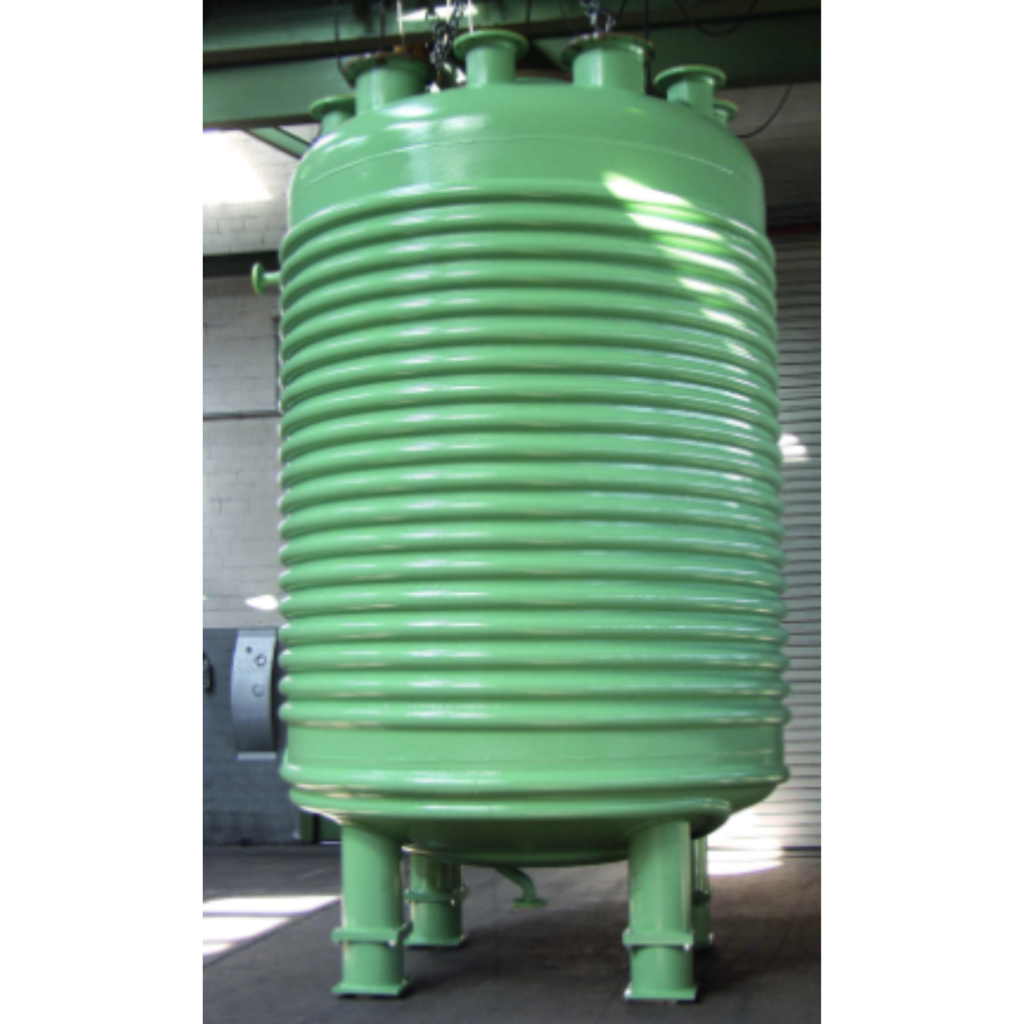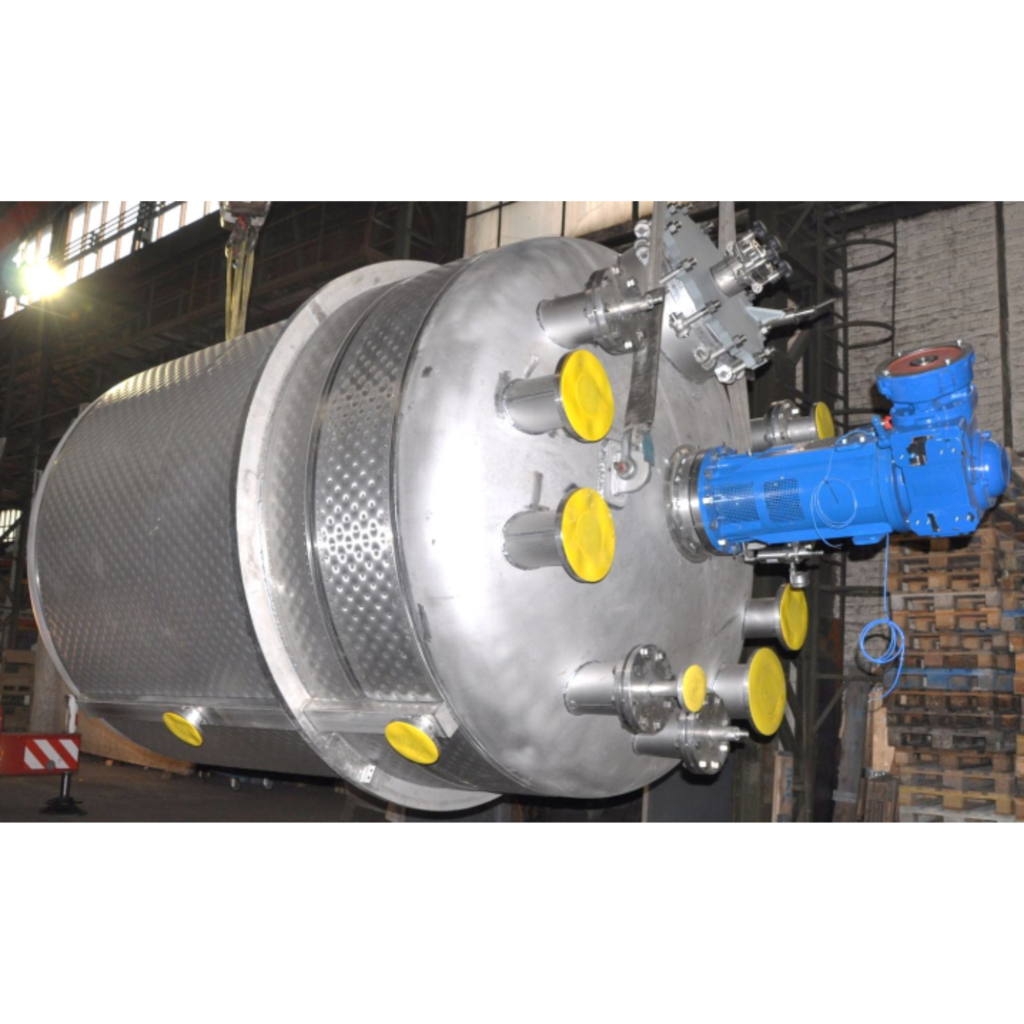Pharmaceutical Technology & Products
Agitator Vessels
Agitated vessels often referred to as stirred tanks or agitated reactors, are industrial vessels used for mixing, blending, and chemical reactions in various industries, including chemical processing, pharmaceuticals, food and beverage, and biotechnology.
The working principles of agitated vessels involve the following key aspects:
- Design: Agitated vessels are typically cylindrical or conical tanks equipped with an agitator system. The agitator system consists of one or more impellers or blades mounted on a shaft.
- Agitation: The agitator system is driven by an electric motor, which rotates the impellers or blades within the vessel. This rotational motion creates turbulence and movement within the liquid or slurry, facilitating mixing and blending.
- Heat Transfer: Agitated vessels often feature jacketed walls or coils for heating or cooling. This allows for precise temperature control during chemical reactions or processes.
- Batch or Continuous Operation: Agitated vessels can be operated in batch mode, where materials are loaded, processed, and then unloaded, or in continuous mode, where materials are continuously fed in and products are continuously discharged.
- Control and Monitoring: Agitation speed, temperature, pressure, and other process parameters are closely monitored and controlled to achieve the desired process outcomes.

Advantages:
Efficient Mixing: Agitated vessels provide efficient and uniform mixing, ensuring homogeneity of the contents.
Temperature Control: Precise temperature control is possible, making them suitable for exothermic or endothermic reactions.
Versatility: Agitated vessels can handle a wide range of viscosities, from liquids to highly viscous slurries, and can be used for various processes, including mixing, dissolution, crystallization, and chemical reactions.
Scalability: Processes developed in laboratory-scale agitated vessels can often be scaled up for larger production using similar equipment.
Automation: Agitated vessels can be fully automated, reducing the need for manual labor and ensuring consistent process conditions.

Disadvantages:
Complexity: Agitated vessels can be complex to design, install, and operate, especially in large-scale industrial settings.
Maintenance: Regular maintenance of agitator systems and seals is required to ensure smooth operation.
Capital Cost: The initial cost of purchasing and installing agitated vessels can be significant, particularly for larger systems.

Applications:
Agitated vessels find applications in a wide range of industries, including:
Chemical Processing: For chemical reactions, mixing of raw materials, and crystallization processes.
Pharmaceuticals: In drug manufacturing for mixing, blending, and reactions.
Food and Beverage: For mixing ingredients in food and beverage production.
Biotechnology: In bioreactors for fermentation processes in the production of bio-based products.
Water and Wastewater Treatment: In processes like flocculation, coagulation, and pH adjustment.

Designing agitated vessels, such as stirred tanks or reactors, involves several important steps to ensure that the vessel can effectively mix and react the contents.
Here’s a general outline of the design steps for agitated vessels:
-
Define the Purpose and Process Requirements:
- Determine the purpose of the vessel (e.g., mixing, chemical reaction, heat transfer).
- Specify the process requirements, including the type of fluid, desired mixing quality, operating temperature and pressure, and other relevant parameters.
-
Material Selection:
- Choose the appropriate material for the vessel based on the properties of the process fluid and the operating conditions (e.g., corrosion resistance, temperature resistance, pressure rating).
-
Vessel Geometry:
- Decide on the vessel’s geometry, including the shape and size. Common vessel shapes include cylindrical, spherical, and conical.
- Determine the vessel’s capacity or volume based on process requirements.
-
Agitator Selection:
- Select the appropriate agitator design and type (e.g., paddle, turbine, propeller, impeller) based on the mixing requirements and fluid properties.
- Determine the agitator size and position in the vessel.
-
Baffle Design:
- Design baffles inside the vessel to control and direct the fluid flow created by the agitator.
- Baffles help improve mixing efficiency and reduce vortex formation.
-
Shaft and Seal Design:
- Specify the shaft material and size to support the agitator and transmit power.
- Choose appropriate seals to prevent leakage and contamination.
-
Drive System:
- Select the type of drive system (e.g., electric motor, gearbox) and its power requirements.
- Determine the agitator’s speed and torque for the desired mixing intensity.
-
Heat Transfer:
- If heat transfer is required, design the vessel to include heat transfer surfaces, such as coils or jackets, and calculate the necessary heat transfer area.
-
Instrumentation and Control:
- Install sensors and control systems to monitor and regulate temperature, pressure, and other critical process variables.
- Implement safety features, such as pressure relief valves and emergency shutdown systems.
-
Compliance and Standards:
- Ensure that the vessel design complies with relevant industry standards and safety regulations.
-
Stress Analysis:
- Perform stress analysis to ensure the vessel can withstand the mechanical stresses imposed during operation.
-
Cost Estimation:
- Estimate the cost of materials, fabrication, and installation.
-
Fabrication and Testing:
- Fabricate the vessel according to the design specifications.
- Conduct quality control inspections and testing to ensure the vessel’s integrity.
-
Installation and Commissioning:
- Install the agitated vessel at the process site and commission it, ensuring that it meets the process requirements and operates safely.
-
Maintenance and Operation:
- Develop a maintenance plan for the agitated vessel to ensure its long-term performance and safety.
- Train operators on safe and efficient operation.
The specific details of each step will depend on the particular application and requirements of the agitated vessel. It is essential to involve engineers and professionals experienced in vessel design and the specific process to ensure a successful design and operation. Additionally, always consider safety as a top priority in the design and operation of agitated vessels.
Summary:
Agitated vessels are versatile industrial equipment used for mixing, blending, and chemical reactions in various industries & in high demand in the worldwide market.
We work by using Agitator Systems/Types to create turbulence and movement within the vessel, facilitating efficient mixing and temperature control.
While we offer advantages such as efficient mixing and precise temperature control, we can be complex to design and maintain, and we often require a significant initial capital investment.
Agitated vessels play a crucial role in processes ranging from chemical reactions to pharmaceutical manufacturing and food production.


 Sales & Marketing:
Sales & Marketing:  Service Supports:
Service Supports:  Website:
Website: 